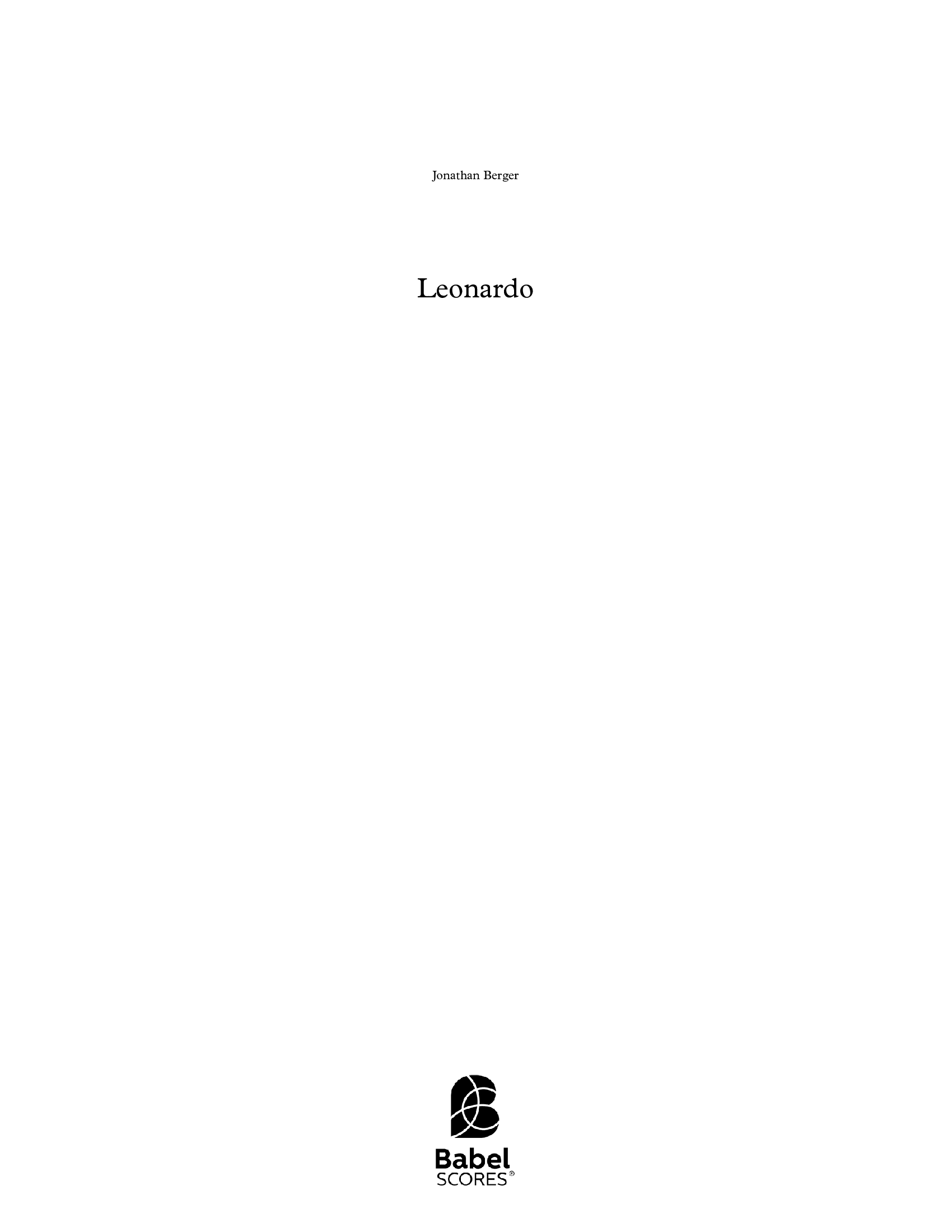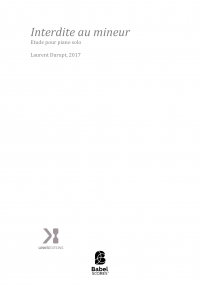Leonardo
ISMN : 979-0-2325-5207-1
- Login to create your own lists
If memory serves me right, my first encounter with Leonardo was when I was in third grade and was shown his sketch of a parachute. I was both struck by the realization that someone actually ‘invented’ a parachute as well as noticing his mirror writing and being told it was a means for a left-handed scribe to write without smudging. Being left-handed with appalling penmanship, I tried my hand at this only to find that it was slow and wasn’t an improvement to my sloppy and smudged writing. DaVinci’s vegetarianism and compassion (he purchased caged birds at the market only to set them free) touched my adolescent pacifist idealism (although I had to squint at his inventions of weapons). My high school fascination with Marcel Duchamp, whose L.H.O.O.Q led me to a rather perverse introduction to La Giocanda. Over time DaVinci’s stature only grew, until his unfathomable genius and creativity became depressingly overbearing.
It was years later that I happened upon a tattered Everyman’s Library edition of excerpts of the Notebooks, and one again got enthralled. This time I was drawn to DaVinci’s observations about perception. Throughout my teaching career I’ve drawn upon Leonardo’s writings. Whether teaching composition, auditory perception, or aesthetics, Da Vinci found his way into the materials.
Not surprisingly, when the 92nd Street Y commissioned me to compose a work marking the quincentenary of Leonardo’s death, I accepted in the blink of the eye. But my initial enthusiasm soon became weighed down by the oppressive larger-than-life persona I was celebrating. Not about to resort to gossipy stories of Leonardo’s relationship with Salai, or his rivalry with Michelangelo. I returned to the notebooks in search of an idea for a libretto. The writing, I discovered, was remarkably clear and direct. I realized that underlying DaVinci’s legendary brilliance, is an inquisitive mortal, whose most important characteristic was asking questions that at first glance seem mundane, trivial, even silly.
What is a sneeze? Why is the movement of human eyes locked in synchrony with one another? What is a yawn? What is lust? These questions, sometimes spontaneously placed in a notebook page, other times part of a master plan for unlocking the mechanisms and purpose of life. Leonardo made an effort to pull together his questions and observations. ‘Voglio far miraculi’ , ‘I wish to work miracles’, he wrote. He did not, I believe, mean superhuman miracles but rather attempting to achieve the impossible task of binding together vast knowledge and brilliant speculation. The book, as he imagined it, would start with the conception of man, understanding pregnancy and childbirth (‘What is it that forces [the baby] out of the body of the mother?’). Leonardo seeks to understand four basic conditions of humankind, joy, weeping, contention and killing.
Two powerful ideas emerged from my readings. First, the notebooks tell the story of Leonardo far better than any librettist could create. Second, although DaVinci uses the term ‘soul’ sparingly, it was this that he was seeking. Half a millennium after Leonardo, the soul remains to most, incorporeal. Leonardo was convinced that the soul has a physical locus, and through his incessant questioning and exploration came to believe that the soul is the ‘senso commune’ – the common sense – the place in the brain where visual, auditory, (and implicitly, tactile, gustatory, and olfactory) sensory messages converge.
But, mortal that Leonardo was, he uses his notebooks to scribble notes to himself. To-do lists – among others, ‘ remember to bring my spectacles’, ‘remember to bring Michelangelo’s little chain’, ‘Ask Luca to teach me the multiplication of roots’, ‘Every Saturday go to the steam baths to see naked men’.
This tribute to Leonardo then, avoids lauding Leonardo’s incalculable marvelous contributions to science, engineering, and art. Instead, I’ve chosen from DaVinci’s inquisitive notes and observations, his humor, and his to-do lists to give a human perspective on a most remarkable man.
Pages - 110



